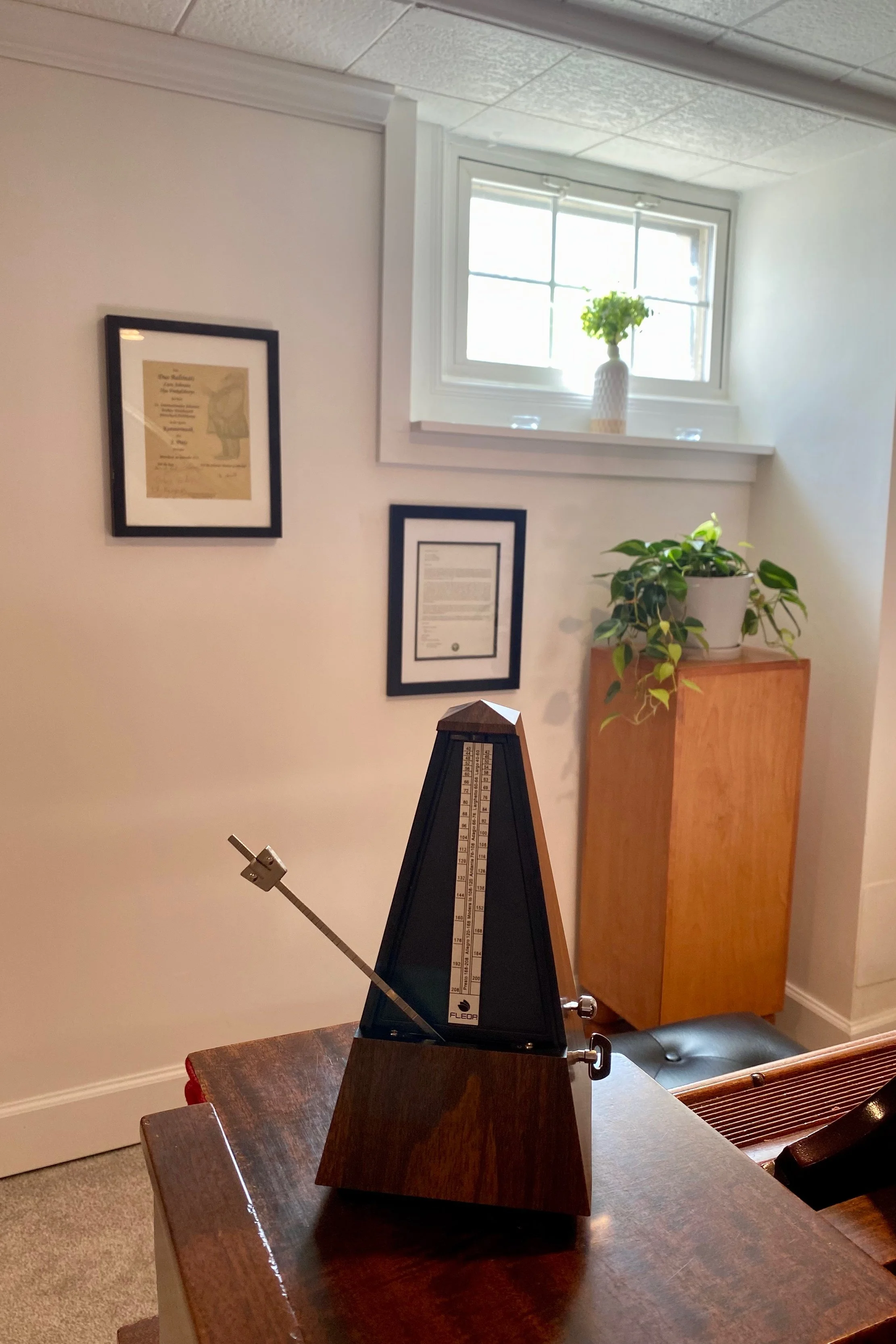The Click and the Life: Understanding Pulse - My Love Letter to the Old-Fashioned Pendulum Metronome
It would be easy to think that the only important thing about a musical beat or pulse is that staccato moment at the beginning of it, that millisecond when the metronome barks, "Click!" and flashes a red light in our face. With only this limited understanding of pulse, a musician must simply try to predict when the next red light and bark will come. It's unsettling, particularly at slower tempi. And we almost always guess early. This is one of the reasons why musicians rush, and why learning to play with a metronome is so challenging for students of the musical arts.
A more complete understanding of pulse includes not only the click, but the life that occurs between the red flashes and clicks. Think back to recess in elementary school when there were two kids turning a long jump rope. Now examine what that jump rope is actually doing. There is certainly a click as the rope hits the pavement, but then there is a round, circular movement of the rope that must happen, in its own time, before the rope can click the pavement again. That roundness, that circular motion that takes time to complete is what I call the life of the beat. It is only when we tap in to this life and give it the time it requires to complete its circular progress towards the next click that we can play without rushing.
Modern metronomes encourage this incomplete understanding of beat by only showing the click and giving us no meaningful way to experience or measure the life. Now think back to that old-fashioned pendulum metronome that used to sit on your mother's piano when you were growing up. The movement of the pendulum from side to side gives us a visual way to see and measure the progress of the beat’s life. We no longer have to simply predict or guess when the next flashing red light will come. We can see the pendulum coming to the end of its trajectory. Like being able to watch the progress bar of a video on a digital device, this pendulum action gives us a meaningful way to know, "Are we there yet?"
Some modern metronomes have on their screen a digital pendulum. But the old-fashioned physical pendulum metronomes can be seen in our peripheral vision, where the digital screen can not. This means we can be watching our fingers on the keys, or the music, or our bow on the string, and still be able to experience and measure where we are in the life of the beat. Furthermore, as my beloved teacher Leon Fleisher used to say, music is governed by, and expressive of, physical forces of nature. The pendulum moving through the air is more viscerally effective at communicating the life of the beat than the digital simulation of a pendulum moving across a screen.
For those of you who study with me, I look forward to sharing my old timey metronome with you and helping you find a stronger, more visceral, and more organic sense of pulse.
